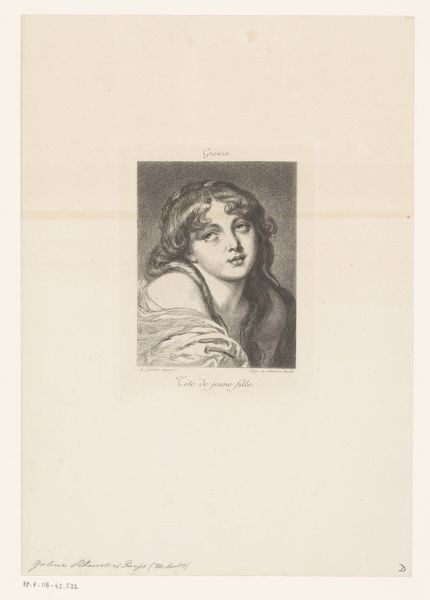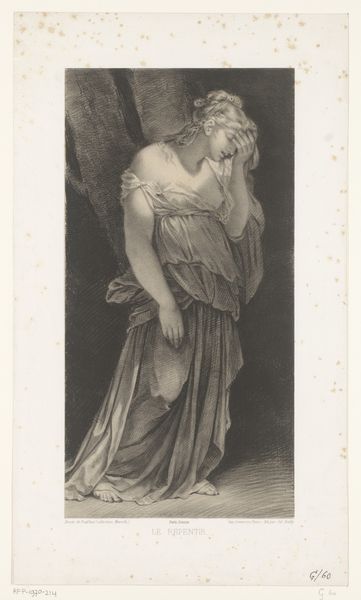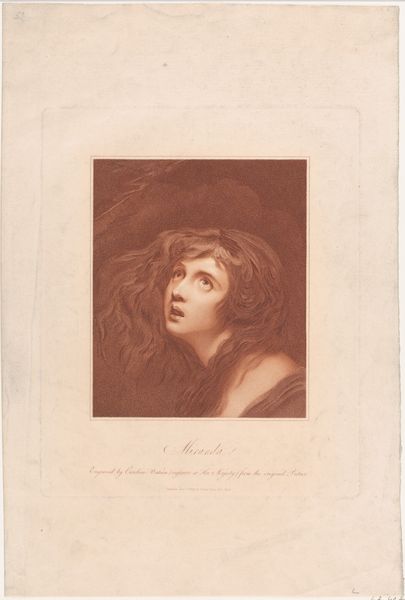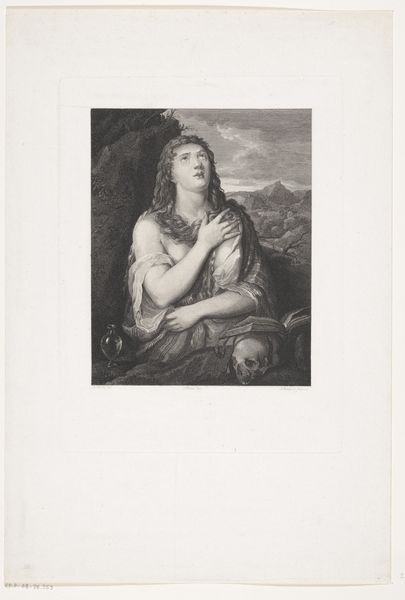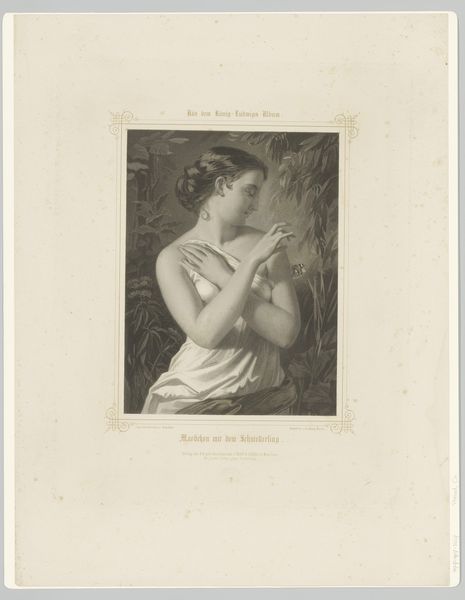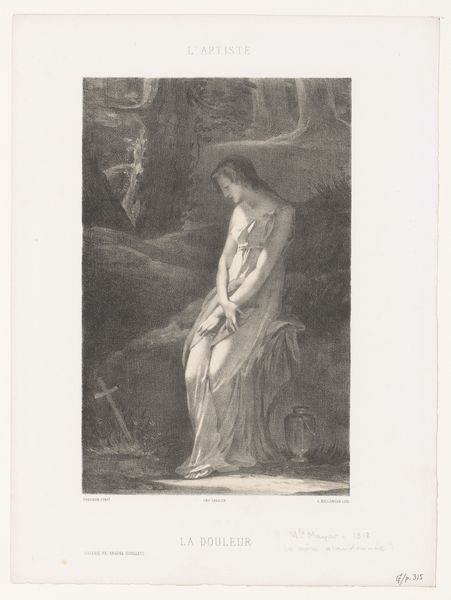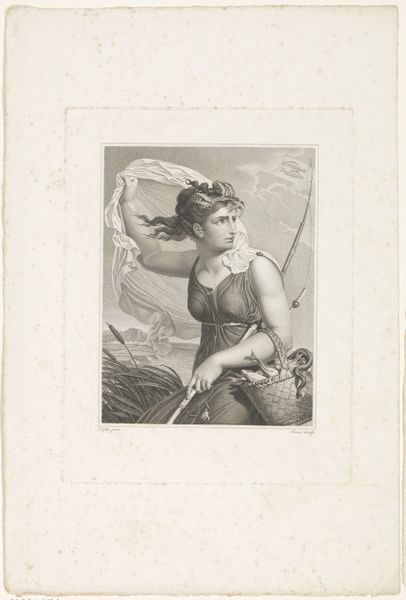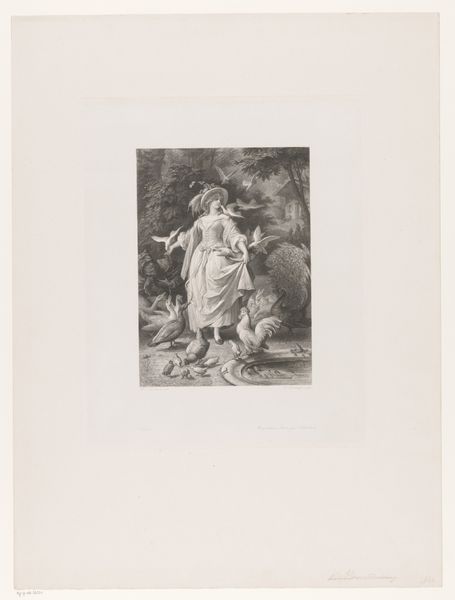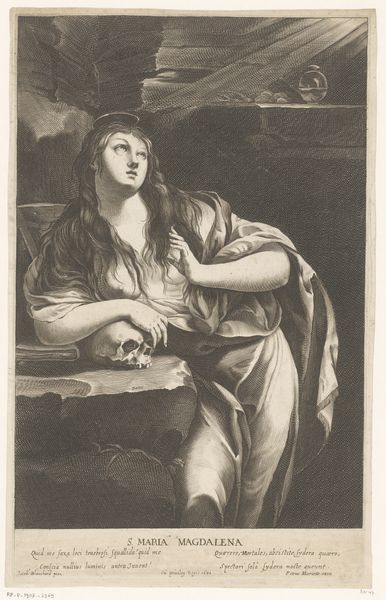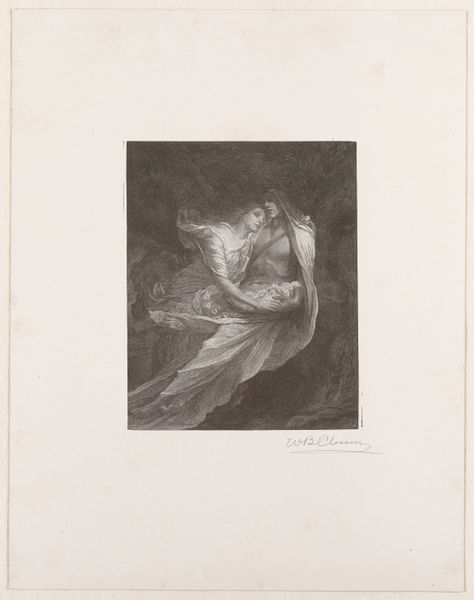
Vrouw met gevouwen handen en wapperende haren, een geschrokken uitdrukking op haar gezicht 1850 - 1913
0:00
0:00
Dimensions: height 209 mm, width 169 mm
Copyright: Rijks Museum: Open Domain
Emile Frédéric Salmon produced this etching of a woman with folded hands and windswept hair sometime in the late 19th century. The image encapsulates the Romantic movement’s preoccupation with extreme emotion. Consider the religious associations of the woman’s posture; clasped hands often indicate prayer, a plea to a higher power during times of distress. The woman’s apparent fright also speaks to the period’s interest in intense psychological states, explored in the literary works of Edgar Allan Poe and the dramatic paintings of Eugène Delacroix. Such cultural themes are indicative of the social uncertainty that followed the Industrial Revolution. Artists responded by turning inward, towards the individual’s emotional experience, in search of a sense of stability. Further exploration into Salmon’s life and the artistic institutions he was involved in would give us even more insight into the image’s significance. Art is always shaped by the context in which it is made.
Comments
No comments
Be the first to comment and join the conversation on the ultimate creative platform.
